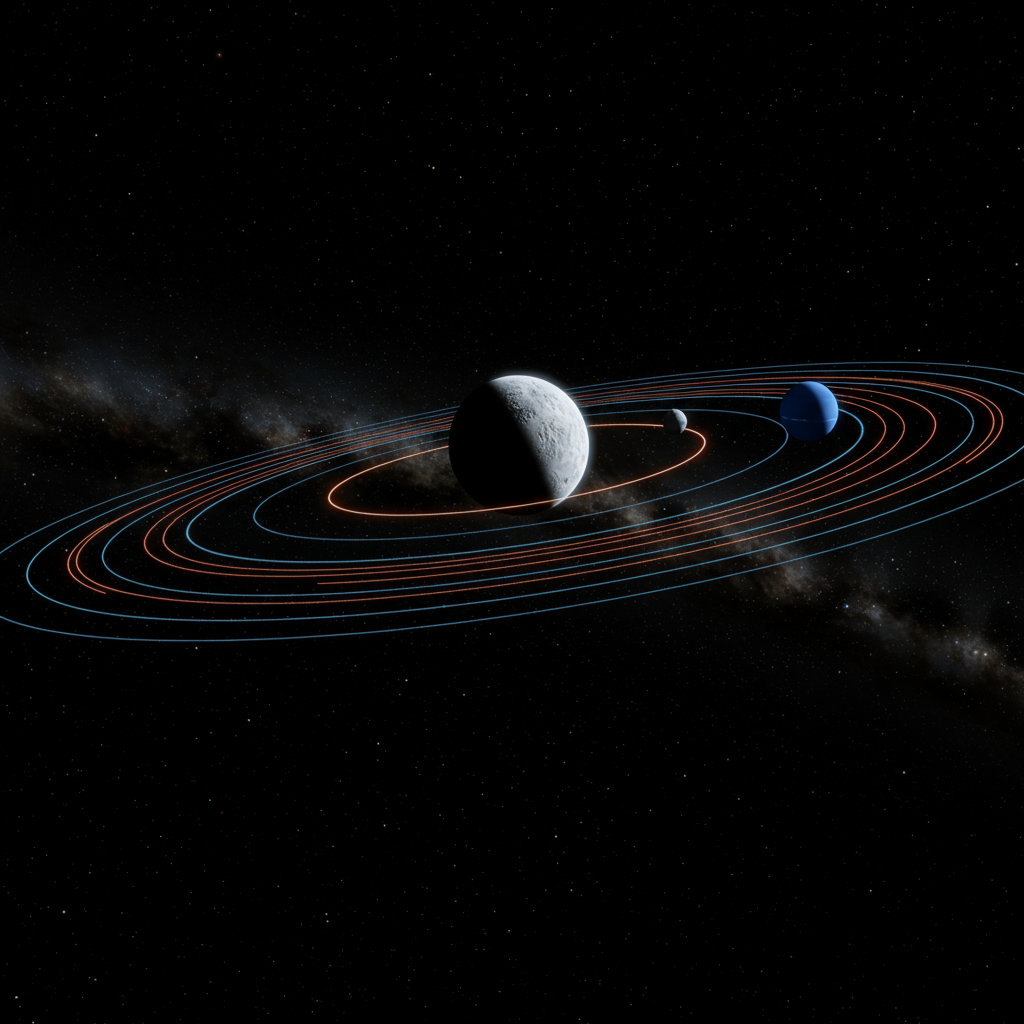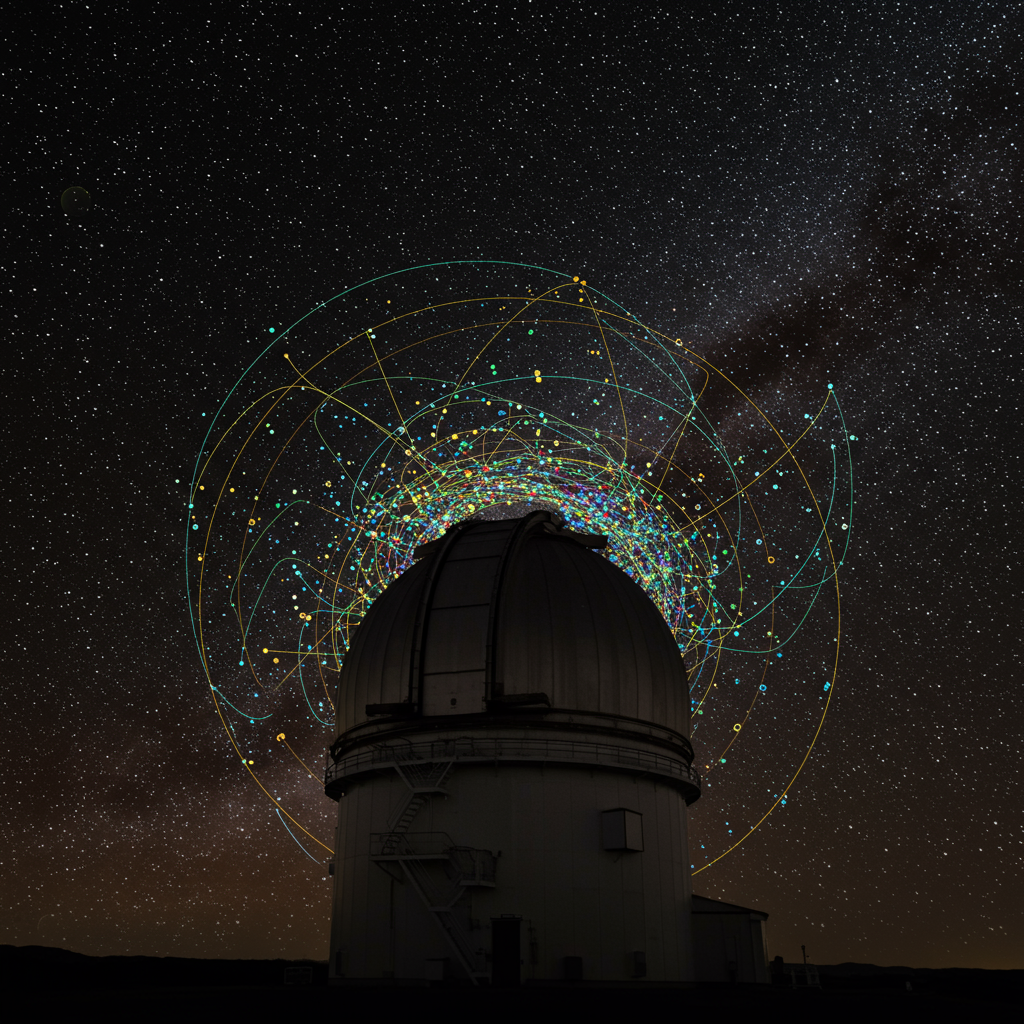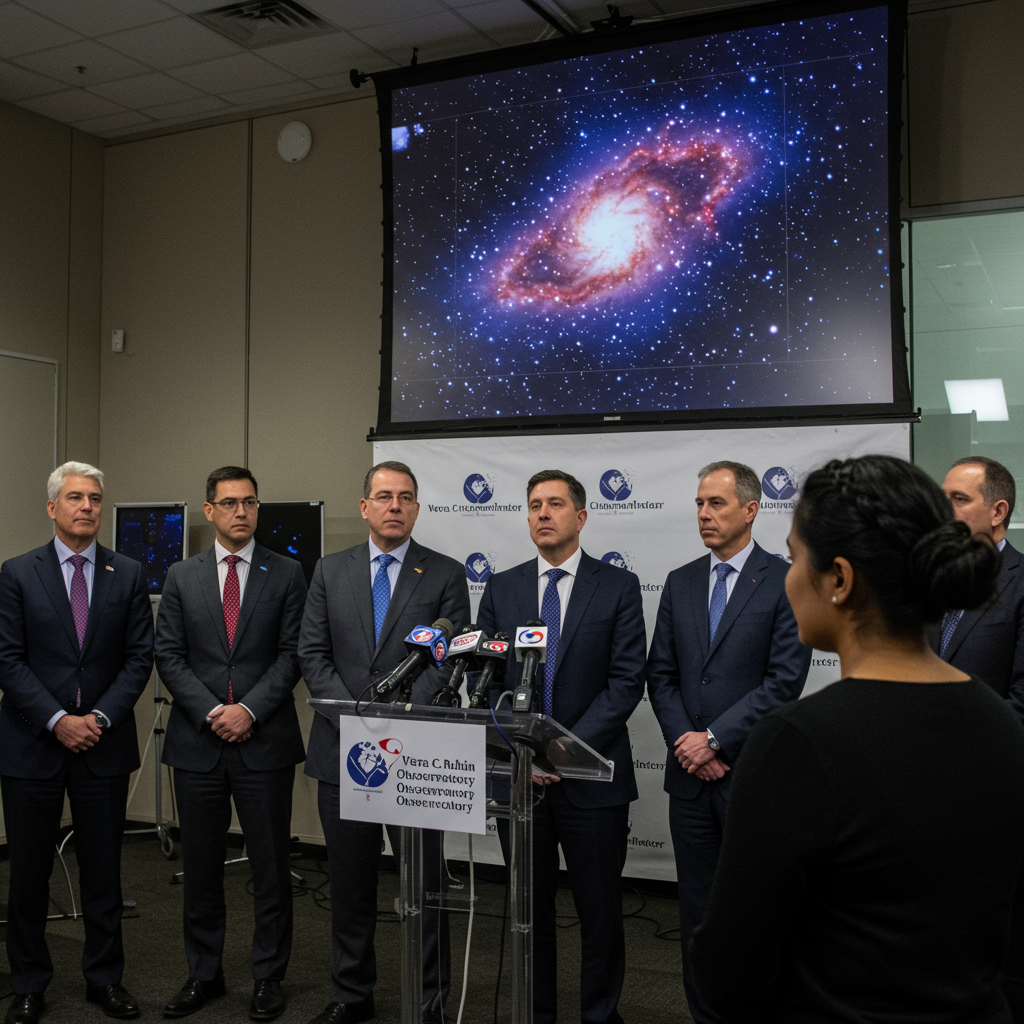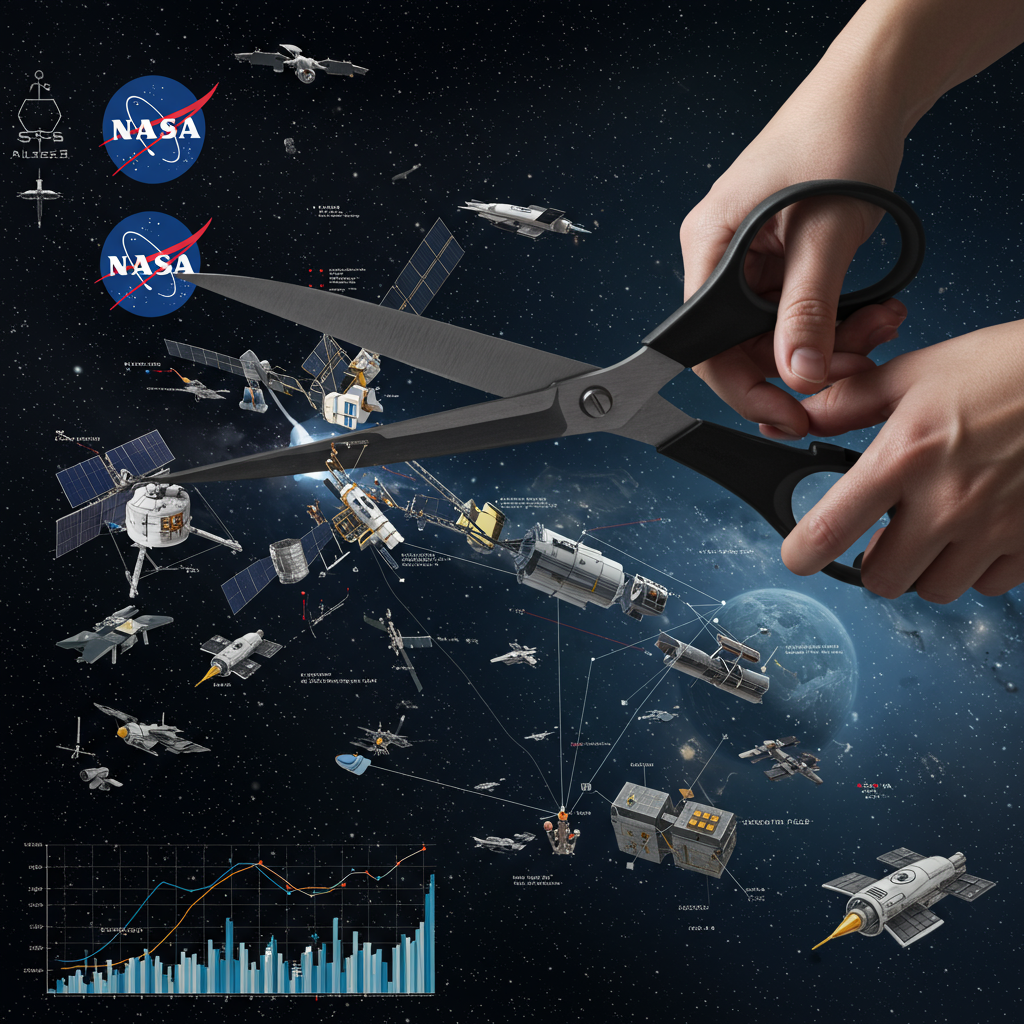Beyond Neptune’s familiar orbit lies a vast, cold expanse of our Solar System, teeming with countless celestial bodies. Among them, dwarf planets and smaller space rocks navigate a complex cosmic ballet, often locked in gravitational synchronicity with the gas giant. While many trans-Neptunian objects (TNOs) exhibit these intricate relationships, a newly identified inhabitant, 2020 VN40, stands out, showcasing an unprecedented 10:1 orbital resonance with Neptune. This groundbreaking discovery offers profound new insights into the outer Solar System’s dynamic history and evolution.
The Rhythmic Dance of Orbital Resonance
Celestial bodies across the cosmos often fall into predictable, rhythmic patterns known as orbital resonance. This phenomenon occurs when orbiting objects complete their laps in a consistent, proportional ratio, influenced by each other’s gravitational pull. A classic example is Pluto, which shares a stable 3:2 resonance with Neptune. This means for every three orbits Neptune completes around the Sun, Pluto finishes two. This intricate arrangement ensures these two distant worlds never collide, even when Pluto’s elliptical path brings it closer to the Sun than Neptune. During these close approaches, Neptune is always safely on the opposite side of its orbit.
However, 2020 VN40’s unique resonance offers a startling departure from these established norms. While many TNOs maintain significant separation from Neptune during their closest solar approach (perihelion), 2020 VN40 defies this trend. Its perihelion actually occurs when Neptune is also in relatively close proximity, creating an unexpected and rare synchronization. This distinctive interaction is what truly sets 2020 VN40 apart from other known objects in the outer Solar System.
2020 VN40: A Record-Breaking Orbit
Discovered in 2020 and meticulously tracked over several months, 2020 VN40 completes a single orbit around the Sun for every ten orbits of Neptune. Considering Neptune’s orbital period is approximately 165 Earth years, this translates to an astonishing 1,648 years for 2020 VN40 to complete just one full circuit. This precise 10:1 ratio is a previously unobserved type of resonance, prompting scientists to rethink long-held assumptions about orbital dynamics in our cosmic neighborhood.
Ruth Murray-Clay, a co-author from the University of California Santa Cruz, eloquently likened this novel motion to “finding a hidden rhythm in a song we thought we knew.” Her statement underscores the potential for this discovery to fundamentally alter our understanding of how distant objects move and interact gravitationally. It highlights that even in regions once considered well-understood, there are still profound secrets waiting to be uncovered.
Unlocking the Solar System’s Past
The significance of 2020 VN40 extends beyond its peculiar orbit. According to Rosemary Pike, lead researcher from the Center for Astrophysics at Harvard & Smithsonian, this finding represents “a big step in understanding the outer Solar System.” It provides compelling evidence that distant regions, even those heavily influenced by Neptune’s gravity, can harbor objects with such unique orbital characteristics. This, in turn, offers fresh clues about the very evolutionary history of our Solar System. The research suggests that 2020 VN40’s highly rhythmic orbit likely originated from a temporary gravitational capture by Neptune.
Despite the close proximity during 2020 VN40’s perihelion, there is no danger of collision with Neptune. This safety is ensured by the space rock’s remarkably highly inclined orbit, tilting over 33 degrees relative to the main plane of the Solar System (the ecliptic plane). Most objects in similar resonance tend to remain closer to this plane, making 2020 VN40’s deep plunge below it another unusual characteristic. While this 10:1 resonance is stable in the short term, simulations indicate it would not persist over billion-year timescales, providing valuable data points for long-term orbital stability models.
The LiDO Survey: Peering into the Unknown
The identification of 2020 VN40 is a direct outcome of the Large inclination Distant Objects (LiDO) survey. This ambitious initiative is specifically designed to explore and classify peculiar objects residing at the far edges of our Solar System, particularly those on highly inclined orbits that extend significantly above and below the ecliptic plane. These regions represent some of the least explored territories within our cosmic backyard.
Dr. Samantha Lawler of the University of Regina, a core member of the LiDO team, expressed fascination at “how many small bodies in the Solar System exist on these very large, very tilted orbits.” The survey utilizes powerful instruments like the Canada-France-Hawaii Telescope, with additional support from the Gemini Observatory and Walter Baade Telescope, to meticulously map these distant, uncharted areas. The success of the LiDO survey highlights the ongoing commitment to expanding humanity’s knowledge of the Solar System’s outermost reaches and the strange dynamics at play there.
The Future of Outer Solar System Exploration
The discovery of 2020 VN40 has ignited renewed interest and urgency in the search for similar objects. Scientists anticipate that future research will be significantly bolstered by the advent of the Vera C. Rubin Observatory. This next-generation facility is poised to play a crucial role in identifying even more objects akin to 2020 VN40, dramatically expanding our understanding of the Solar System’s distant and less-understood regions.
Kathryn Volk of the Planetary Science Institute aptly summarized the sentiment within the scientific community, stating, “This is just the beginning. We’re opening a new window into the Solar System’s past.” The intensified hunt for additional TNOs promises to yield further groundbreaking discoveries, continuously unveiling the mysteries of our cosmic neighborhood and refining our models of its formation and evolution. Each new object found, particularly those with unique orbital characteristics like 2020 VN40, provides another piece to the complex puzzle of our Solar System’s origins.
Frequently Asked Questions
What is 2020 VN40, and what makes its orbit around the Sun so unique?
2020 VN40 is a newly discovered space rock, a trans-Neptunian object (TNO), located beyond Neptune’s orbit. Its orbit is unique because it’s locked in a rare and precise 10:1 orbital resonance with Neptune. This means for every ten times Neptune orbits the Sun (approximately 165 years per orbit), 2020 VN40 completes just one orbit (taking about 1,648 years). Unusually, its closest approach to the Sun occurs when Neptune is also nearby, a synchronization not typically seen in similar resonant objects.
How does 2020 VN40’s orbital resonance compare to Pluto’s, and why is it considered stable despite close encounters with Neptune?
Unlike Pluto’s stable 3:2 resonance with Neptune, where Pluto’s closest approach to the Sun happens when Neptune is on the opposite side of its orbit, 2020 VN40’s closest solar pass occurs when Neptune is also in proximity. Despite this, there’s no collision risk due to 2020 VN40’s highly inclined orbit, tilted over 33 degrees relative to the Solar System’s main plane. This significant inclination ensures the two bodies maintain a safe vertical separation, preventing any direct impact, though the resonance is stable only in the short term, not over billions of years.
How are objects like 2020 VN40 discovered, and what’s next for research into the outer Solar System?
Objects like 2020 VN40 are discovered through dedicated astronomical surveys, such as the Large inclination Distant Objects (LiDO) survey, which specifically targets peculiar objects in highly tilted orbits at the Solar System’s edge. Researchers use powerful telescopes like the Canada-France-Hawaii Telescope to track these distant bodies over many months. The ongoing search for more TNOs will be greatly aided by next-generation observatories like the Vera C. Rubin Observatory, which is expected to significantly increase our ability to detect and study these mysterious objects, further expanding our understanding of the Solar System’s formation and past.




